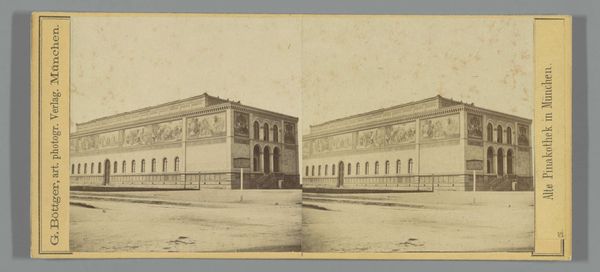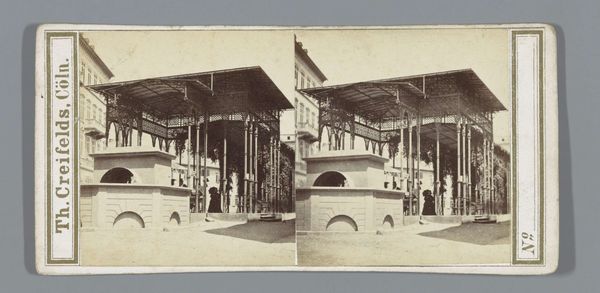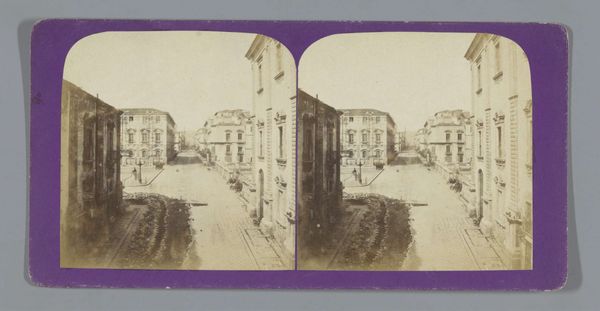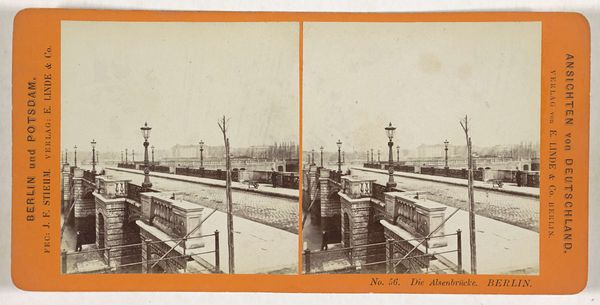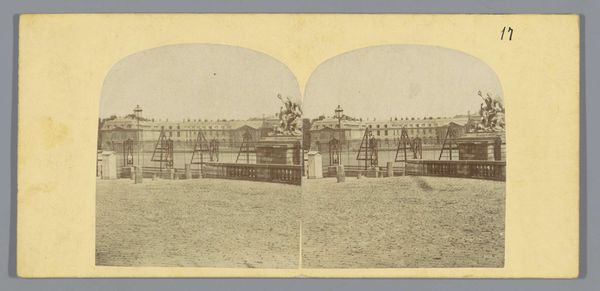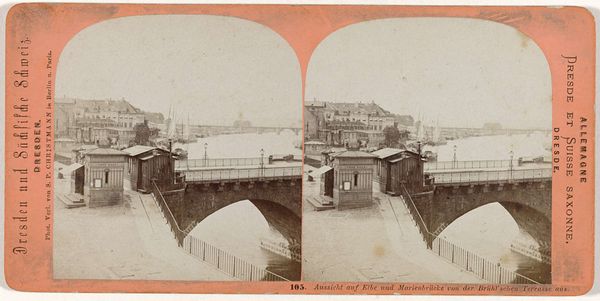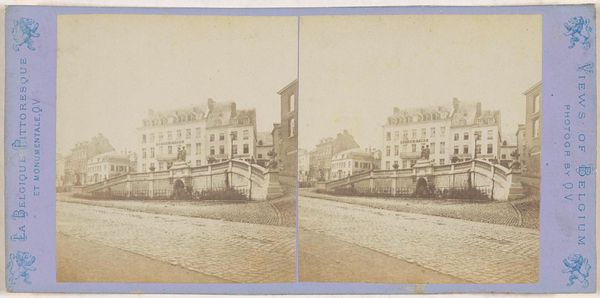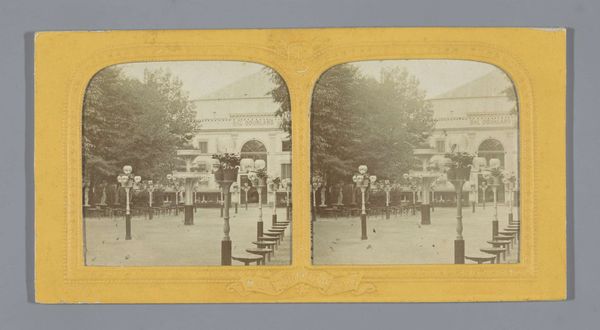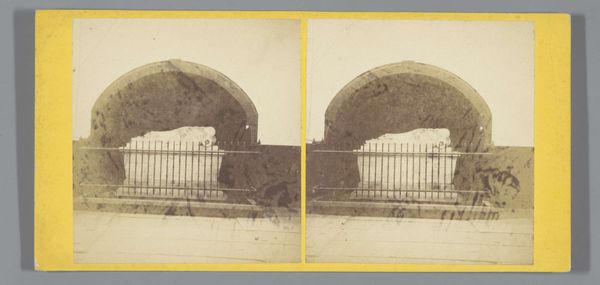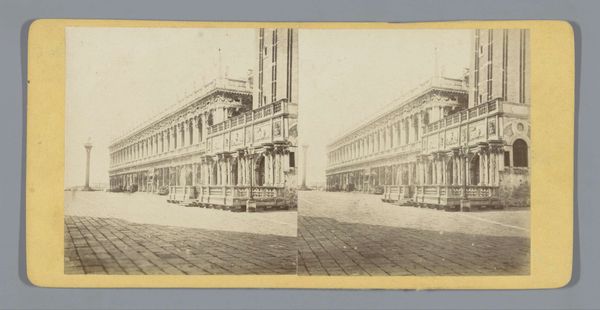
print, photography
# print
#
photography
#
coloured pencil
#
cityscape
Dimensions: height 86 mm, width 176 mm
Copyright: Rijks Museum: Open Domain
Curator: This photograph, dating from between 1900 and 1902, captures the Westelijk spoorwegviaduct and Centraal Station in Amsterdam. It's a fascinating example of early 20th-century cityscape photography, presented in a print format. Editor: Immediately, I’m struck by the stillness and isolation it conveys despite portraying a major transport hub. The subdued tones and wide-open space in front of the station lend a somber, almost melancholic air to what one would expect to be a bustling scene. Curator: Indeed. The composition is quite structured, almost geometric in its organization. The imposing façade of the station anchors the background, balanced by the subtle diagonals of the viaduct and street leading into the frame. Observe how the photographer has employed leading lines to draw the eye into the depths of the city. Editor: Absolutely. And considering the socio-economic context, this image subtly documents the transition from horse-drawn carriages, as seen on the left, to the impending dominance of railway transport—a turning point in urban mobility and spatial restructuring, potentially reinforcing or generating new class divides. Curator: A valuable point. Technically, the print’s sepia tone enhances its historical quality, emphasizing a sense of age and distance. The detail, although limited, reveals the architectural grandeur of the station, a clear statement of civic pride. Look closely, and you can almost discern the subtle gradations of light and shadow. Editor: However, that "civic pride" can be interrogated. Who exactly benefited from the monumental architecture? And whose stories are erased or minimized within these visual narratives of progress? How might this view have looked different from the perspective of working-class Amsterdammers living in the shadows of these developments? Curator: The beauty of this photograph lies in its layered complexity. One can admire its formal qualities while acknowledging its historical significance, understanding that representation is never truly neutral. Editor: Precisely. Images like these invite us to delve deeper, questioning the dominant narratives they present and excavating the stories often hidden beneath the surface of official documentation.
Comments
No comments
Be the first to comment and join the conversation on the ultimate creative platform.
